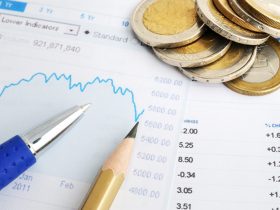By Prerana Bhat
BENGALURU (Reuters) -The Federal Reserve will leave its benchmark overnight interest rate unchanged at the end of its Sept. 19-20 policy meeting and probably wait until the April-June period of 2024 or later before cutting it, according to economists in a Reuters poll.
Fed Chair Jerome Powell underscored the “higher-for-longer” mantra for rates in a speech at the annual Jackson Hole central banking symposium in August and maintained another rate hike might still be needed to bring inflation down to the 2% target.
But other members of the rate-setting Federal Open Market Committee (FOMC), including some of the more hawkish ones, have raised the possibility of holding off on another rate hike to allow more time to gauge the impact of the cumulative 525 basis points of tightening delivered by the Fed since March 2022.
More than 95% of economists, 94 of 97, in the Sept. 7-12 Reuters poll predicted the U.S. central bank would hold the federal funds rate in the current 5.25%-5.50% range next week, in line with market expectations.
Still, nearly 20% of the economists, 17 of 97, predicted at least one more rate rise before the end of the year, including three who expected one this month.
“Though we continue to expect the Fed to remain on hold at the Sept. 20 FOMC meeting, we would not be surprised to see most officials continue to project one more rate hike by year-end in their updated ‘dot plot,'” said Brett Ryan, senior U.S. economist at Deutsche Bank, referring to the interest rate projections released by Fed policymakers on a quarterly basis.
“While there has been meaningful progress to date on inflation … the Fed will not be able to take this for granted.”
Much of the immediate outlook for Fed policy will depend on the release on Wednesday of Consumer Price Index (CPI) data for August. The CPI was expected to have risen 0.6% last month, after a 0.2% rise in July, according to economists polled by Reuters. If realized, that would mean an acceleration in the annual rate to 3.6% from 3.2%.
JOB MARKET
The unemployment rate rose to 3.8% in August, raising hopes among those who don’t want to see another rate hike that the U.S. labor market was finally cooling.
But the Reuters poll of economists forecast that the jobless rate would average 3.7% this year and rise only slightly to 4.3% in 2024, suggesting the Fed even then will not be far off its goal of full employment.
House prices and rents were also expected to remain elevated now that a relatively brief U.S. housing market correction appears to be over, according to a separate Reuters poll.
That may put the brakes on further declines in inflation, which is not predicted to reach the Fed’s target until at least 2025.
That suggests rate cuts may still be a long way off.
Of the 87 respondents who had forecasts until the middle of 2024, 28 put the timing of the first rate cut in the first quarter and 33 had it in the quarter after that. Only one said the Fed would cut rates this year.
Around 70% of those respondents, 62 of 87, had at least one rate cut by the end of next June. Still, all but five of 28 respondents to an extra question said the bigger risk was that the first Fed cut would come later than they currently forecast.
“Tight labor and housing markets present upside risk to inflation … That means that absent a recession, policymakers are likely to keep policy rates on hold well into 2024,” said Andrew Hollenhorst, chief U.S. economist at Citi.
A serious economic downturn could justify an earlier rate cut, but that is looking less likely. The economy was expected to expand by 2.0% this year and 0.9% in 2024, according to the poll.
The median view from a dwindling sample of economists who provided responses on the probability of a recession within one year fell further to 30%, after tumbling below 50% for the first time in nearly a year last month. It peaked at 65% in October 2022.
“In our base-case forecast, the economy enters recession in the first half of next year, which would have the Fed cutting by Q2. But the risk is that growth holds up and the first cut is pushed out later,” Citi’s Hollenhorst said.
(For other stories from the Reuters global economic poll:)
Read the full article here










Leave a Reply